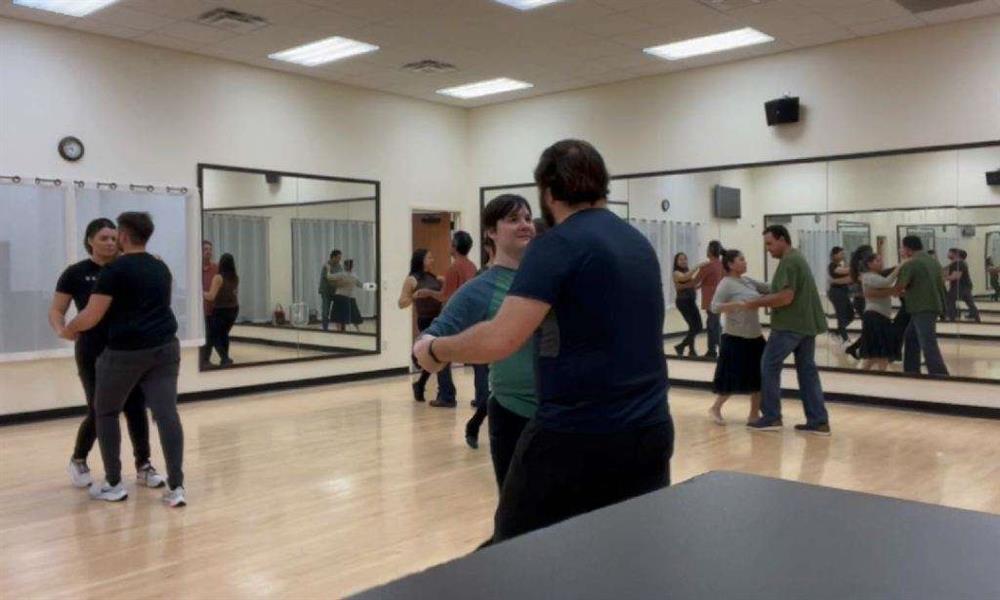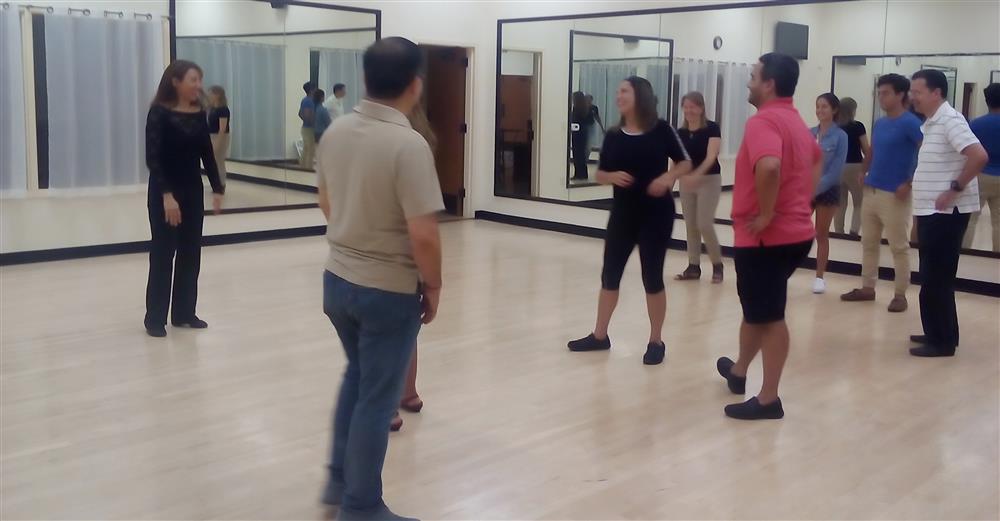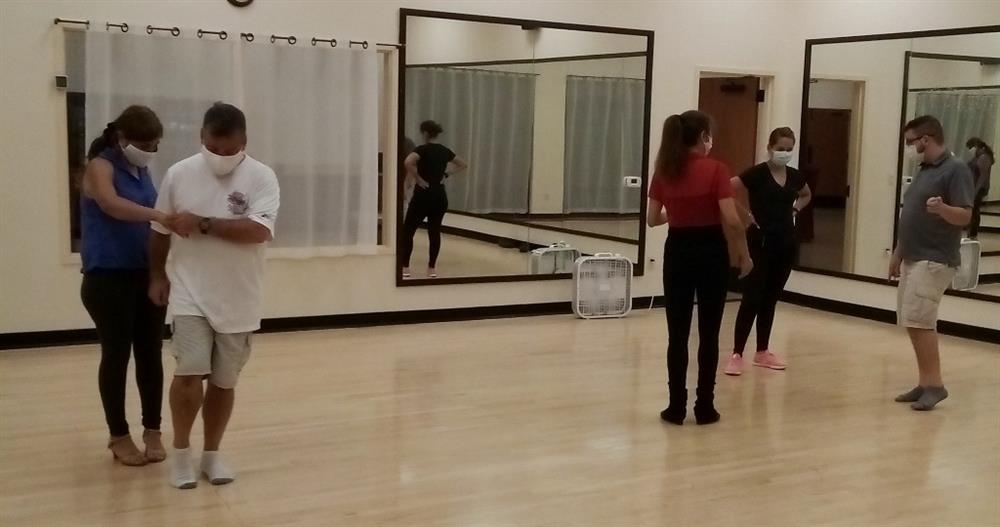
This is the starter dance course that no one should miss. Here is what you can expect to learn:
- The essential dance basics of Salsa and Cumbia dances
- Basic principles of leading and following
- Fun simple basic turn patterns
- Dance etiquette
 Students can also expect the following:
Students can also expect the following:
- Exercise
- Clear, easy to follow instruction
- Fun
- Meeting new people
- The ability to Social dance
Salsa Dance
Salsa is a popular form of social dance that originated in New York City with strong influences from Latin America, particularly Puerto Rico, and Cuba. The movements of salsa dance have origins in Cuban Son, Cha-cha-cha, Mambo and other dance forms, and the dance, along with the salsa music, originated in the mid-1970s in New York.
<

Origin of Salsa Dance
The name salsa (mixture) has been described as a dance since the mid-1970s. The use of the term for the dance started in New York. It evolved from earlier Cuban dance forms such as Son, Son Montuno, Cha cha cha and Mambo which were popular in the Caribbean, Latin America and the Latino communities in New York since the 1940s. Salsa, like most music genres has gone through a lot of variation through the years and incorporated elements of Afro-Cuban and Afro-Caribbean dances such as Guaguanco and Pachanga. Different countries of the Caribbean and Latin America have distinct salsa dance styles of their own, such as Cuban, Colombian, Puerto Rican, L.A. and New York styles.
There is some controversy surrounding the origins of the word salsa. Some claim that it was based on a cry shouted by musicians while they were playing their music. Others believe that the term was created by record labels to better market their music, who chose the word "salsa" because of its spicy and hot connotations. Still others believe the term came about because salsa dancing and music is a mixture of different styles, just like salsa or "sauce" in Latin American countries is a mixture of different ingredients.
Cumbia Moves and Steps
A basic step often seen in Cumbia dancing is the back-break basic. Cumbia is characterized by a "wind-up" motion and it is often danced in a circular pattern sometimes called the Columbian or Cumbia circle basic.
Like most Latin dances, Cumbia is closely related to Swing and there are many common moves found in Cumbia and Swing. In Costa Rica, they call the Cumbia, "El Swing".